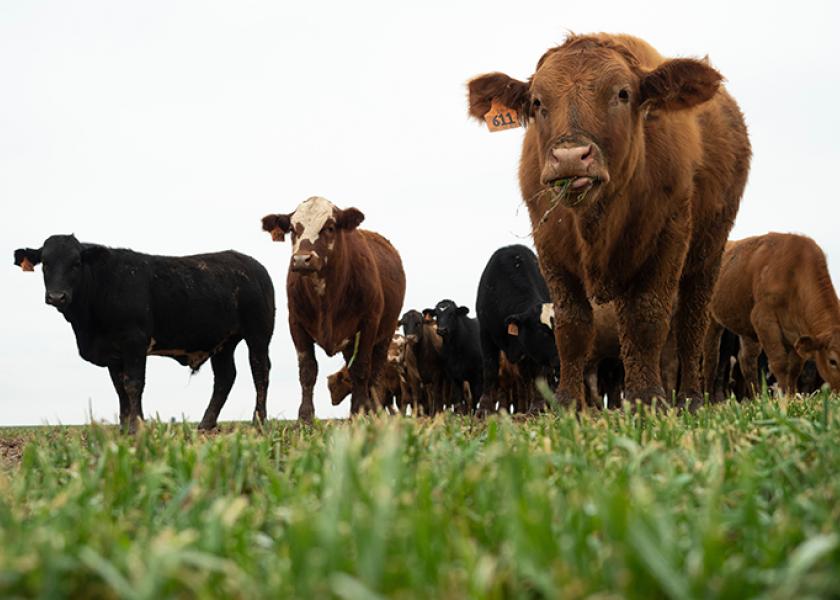Winter Wheat Grazing Hopes Revived

Most of Oklahoma has received significant rain in the past week reviving hopes for wheat pasture. The majority of the state was blessed with 1.5 to over 6 inches of rain. Only the northwest and panhandle regions missed out this time.
Wheat stands around the state are quite variable with some bigger wheat all the way down to wheat barely emerged. The latest Crop Progress report shows that 71 percent of Oklahoma wheat is planted, two percent more than last year but less than the 75 percent 5-year average. In recent extension meetings, many producers have indicated that they expect to have wheat pasture, if somewhat later than usual in many cases. Some producers have already purchased stockers, betting on the come, while others will be in the market now. Figure 1 shows prices for stocker steers this fall in Oklahoma. Prices for the preferred stockers under 500 pounds have not decreased seasonally this fall. In fact, average prices for 450-500 steers in October were higher than September. Prices for heavier feeder cattle over 600 pounds have decreased about 10 percent in recent weeks.

Both Live and Feeder futures have seen a huge downward correction in the past six weeks after months of trending higher. Both markets have dropped precipitously in the last half of October but appear to be stabilizing now. A profit-taking correction is not surprising and has been made worse by recent global events and enhanced market volatility. March Feeder futures are currently priced at about $238/cwt., down from roughly $255/cwt. just two weeks ago. Current cash and futures prices imply a value of gain from November 1 to early March of about $1.50/pound for a 475-stocker steer. Depending on specific cost assumptions, this is about equal to the breakeven for winter grazing, providing returns to wheat pasture and labor but nothing beyond that for the cattle. If feeder futures rebound somewhat, as I expect, there may be better opportunities to lock in additional returns in the coming weeks.
Reduced feeder auction volumes reflect the decreasing supplies of cattle in the country. Oklahoma combined auction feeder volume is down 10.6 percent year over year thus far in 2023. The auction volume has been down every week for the last ten weeks and is down 14.7 percent compared to the same period one year ago. The biggest weekly volumes of the year typically occur in the next six weeks but are likely to remain below year-ago levels. With smaller volumes and stronger wheat pasture demand, stocker calf prices are unlikely to show any seasonal weakness in the coming weeks and may move higher, depending on the impact of broader market uncertainty and volatility.







